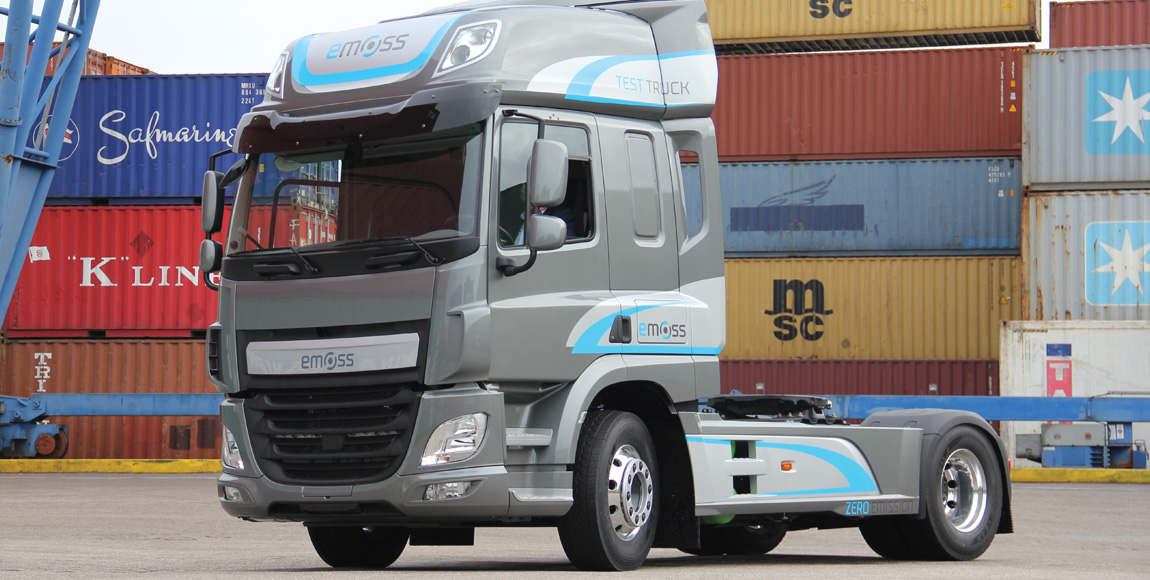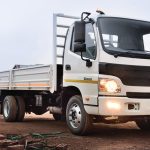Local electric conversions – a viable proposition?

GAVIN MYERS meets a local company that is setting out to convert the nation’s heavy commercial vehicles to electric propulsion
Dwindling fuel reserves (and, locally, the relentless rises in the price of fuel) and the continually increasing international push for greener vehicles mean that alternative power is now being explored on a very wide scale. Vehicle original equipment manufacturers (OEMs) are investing billions per year to develop products that run on either gas or electrical power, as diesel heads slowly down a path of demise.
In the last issue we looked at the merits of natural gas in the local context (mainly from the supply perspective). While gas-powered vehicles have been running successfully in trials and within government fleets, the conversation has not quite turned to pure electric vehicles (as opposed to hybrids) yet.
However, Zenergy South Africa is one of the few third-party companies trying to change this. For the past seven years, Zenergy has been exploring the options for electrification of vehicles in South Africa and the company’s CEO, Ziggy Rudman, feels that the time has come to flip the switch on battery power.
The Zenergy solution is based on a proprietary system from Emoss, a Dutch company that has been converting commercial vehicles for the past 15 years with technology funded for military and government purposes.

“We looked hard for a product that would suit the conditions in South Africa,” Rudman says. The Emoss system is scalable for vehicles ranging between 3,5 and 50 t and produces up to 1 500 hp (1 100 kW) and 3 600 Nm of thrust. The 80 to 300 kWh battery packs are claimed to have a 20-year lifespan before they can enter the secondary market in photovoltaic (solar) applications.
Mechanically, the differentials are upgraded and the driveshafts are shortened. The vehicle’s power steering, air-conditioning, braking system, power take-off and auxiliary components are integrated.
“Emoss understands that it’s the software and batteries that require continual development. The system has a built-in five-stage artificial intelligence (AI) program that adapts to the driver’s style for best efficiency. The operator can closely monitor the driver and vehicle through the systems,” Rudman adds.
Currently, the system is built to European and ISO standards with all certifications on MAN and DAF vehicles in place. Rudman comments that only minor local homologation is required. The system arrives in kit form and Zenergy is said to have the expertise to carry out two to four conversions a month.
Could such a conversion be practical for a transport operator, though? After all, electricity supply in South Africa is increasingly unreliable and there are very few, if any, electric-vehicle charging stations at truck stops and depots around the country.
According to Rudman, a converted 50-t truck can reach a distance of 600 km on a single 45-minute charge. With a gas-powered generator on board, this range goes up to 1 100 km. He’s bullish about the potential for trips from Johannesburg to Durban, and even to Cape Town.
“The trucks can’t be stuck without energy. We’ve partnered with Soventix – based locally in Cape Town – to provide a wholistic off-grid charging solution, including solar generation and storage,” Rudman advises.
While Zenergy has approached the topic of energy provision holistically, such a conversion still needs to make financial sense to the operator. Of course, it does not come cheap; the initial outlay for a single 50-t, long-distance truck (with gas range extender) comes in at around R7 million. Rudman suggests that the break-even point will be at around three and a half years, when compared to the purchase and running costs of a diesel-powered truck.

“When considering a typical 38-t load over a distance of 1 100 km at R16/litre of diesel (or 450 litres), the estimated cost per kilometre (including maintenance) would be R6,82. A comparable electric vehicle with range extender would cost R1,20,” he says. Zenergy claims that savings over three years will amount to roughly R240 000 (if using Eskom power) or R348 000 (if using solar power). This compares to close to a million rand in running costs of the conventional truck in the same scenario.
“We understand the initial outlay is large, but the more converted vehicles there are in a fleet the bigger the impact on the bottom line. The conversion has to make financial sense and this is only realised when all the costs over the lifetime of a typical truck are tallied,” he comments.
Regarding maintenance and aftersales back-up, Rudman states that maintenance costs are the same as minor servicing on any comparable conventional vehicle while the minimal spare parts that are needed for the system are kept in stock.
“We’ve looked at every angle of how this conversion can work for a commercial vehicle operator,” Rudman assures.
So, could there soon be a future for electrically converted commercial vehicles in South Africa? If Zenergy has anything to say about it, there may very well be. It’ll be interesting to see how the various alternative forms of propulsion – from gas to electric – will evolve in this market as diesel and environmental considerations rage on.
Published by
Focus on Transport
focusmagsa




